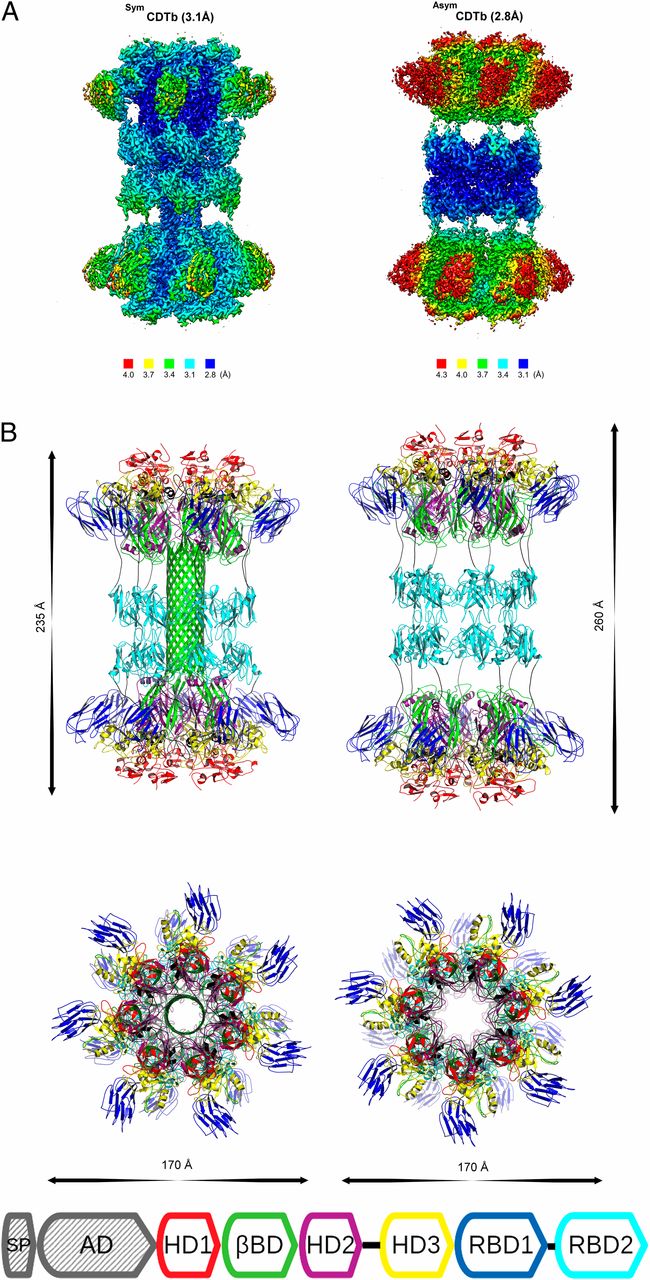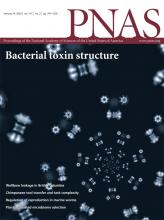Revealing the Key to Hypervirulent C. difficile Toxin Delivery

Figure 3 from Xu et al. (2020) PNAS. 117(2): 1049-1058.
January 31, 2020 - The opportunistic bacterial pathogen, Clostridioides difficile, is the leading cause of hospital-acquired infection in the US, afflicting 500,000 individuals and causing an estimated 15,000 deaths each year. In addition to the challenge of drug-resistant infections, many C. difficile symptoms are caused by a variety of toxins produced by the bacteria. An emerging hypervirulent strain carries a new toxin—C. difficile binary toxin (CDT)— against which no current therapies are targeted.
IBBR Associate Director David J. Weber (Professor, UMB Department of Biochemistry and Molecular Biology and Director, Center for Biomolecular Therapeutics) recently led a large team of scientists who used a suite of complementary structural biology and biophysical methods to solve the structure of the delivery component (CDTb) of the toxin, the portion that delivers the active piece into host cells. Molecular details of the large di-heptamer (14-piece) protein complex will inform the design of drugs and vaccines targeted against CDT. The team plans future studies that will be enabled by cryo-EM capabilities at IBBR’s Maryland Center for Advanced Molecular Analysis (M-CAMA), which opened last summer.

The study was the result of an impressive collaboration of researchers from IBBR, UMCP, and UMB, as well as teams from City College of New York and Merck & Co. Inc. IBBR contributors include Edwin Pozharski (Assistant Professor, UMB Department of Biochemistry & Molecular Biology), Raquel Godoy-Ruiz (Assistant Professor, UMB Department of Biochemistry & Molecular Biology), Kristen Varney (Associate Professor, Biochemistry and Molecular Biology), Alex MacKerell (Professor, UMB Department of Pharmaceutical Sciences), Wenbo Yu (Research Assistant Professor, UMB Department of Pharmaceutical Sciences), Alexander Grishaev (NIST Research Chemist), and Thomas Cleveland (NIST Research Physicist).
The structure was reported in the January 14, 2020 issue of Proceedings of the National Academies of Sciences USA. An image submitted by Weber’s lab (created by M.E. Cook) was chosen as the issue’s cover image.
To learn more, see the University of Maryland School of Medicine’s press release.
-----
Inquiries: communications@ibbr.umd.edu
